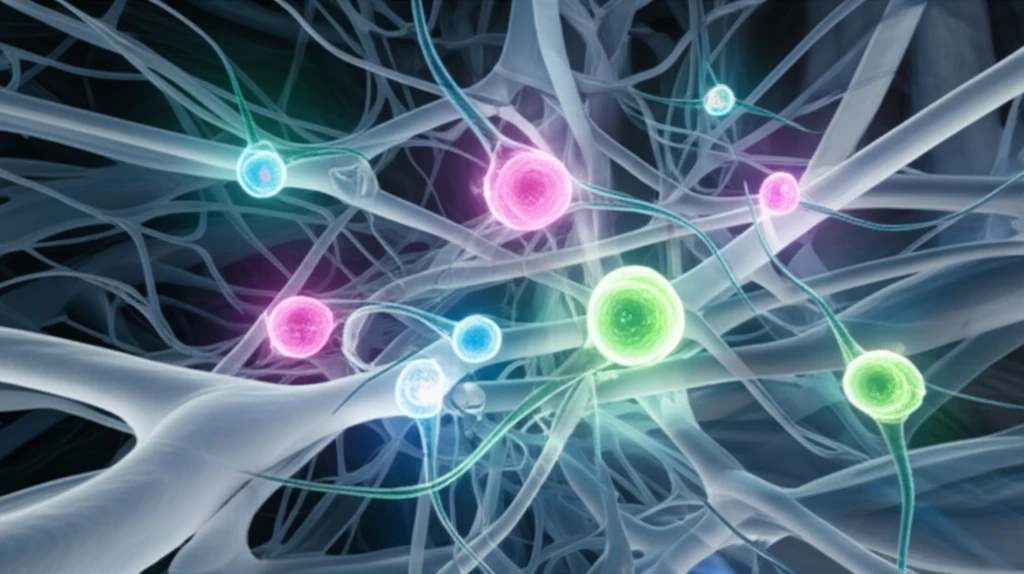
Umbilical Cord Stem Cells: A New Frontier in Imaging and Therapy
"Unlock the Potential of hUCMSCs with Advanced Imaging Techniques for Enhanced Regenerative Medicine"
Stem cell therapy holds immense promise for treating a wide range of diseases, from autoimmune disorders to tissue regeneration. However, effectively tracking and understanding the behavior of transplanted stem cells in vivo—within a living organism—remains a significant challenge. Traditional methods often lack the sensitivity and real-time visualization needed to fully assess the distribution, survival, and integration of these cells.
To address this challenge, researchers are increasingly turning to multi-modal imaging techniques. These approaches combine different imaging modalities, such as fluorescence imaging, magnetic resonance imaging (MRI), and single-photon emission computed tomography (SPECT), to provide a more comprehensive picture of stem cell behavior. A particularly promising avenue involves human umbilical cord mesenchymal stem cells (hUCMSCs), which possess several advantages over other stem cell sources, including their ease of accessibility, high proliferative capacity, and low immunogenicity.
A recent study explored the potential of genetically modified hUCMSCs, labeled with both a fluorescent reporter gene (EGFP) and superparamagnetic iron oxide (SPIO) nanoparticles, for multi-modal imaging. This approach allows researchers to simultaneously visualize the cells using fluorescence microscopy, track their distribution with MRI, and assess their functionality with SPECT. The study's findings offer valuable insights into the development of more effective stem cell therapies and highlight the potential of hUCMSCs as a versatile tool for regenerative medicine.
Engineering hUCMSCs for Multi-Modal Imaging: A Step-by-Step Approach

The study meticulously outlines the process of creating a stem cell line suitable for multi-modal imaging. Here's a breakdown of the key steps:
- Lentiviral Transduction: The hUCMSCs were transduced with a lentiviral vector containing the hNIS and EGFP genes. Lentiviral vectors are efficient at delivering genes into cells, including stem cells, and ensuring stable expression of the desired genes.
- SPIO Labeling: To enable MRI tracking, the hUCMSCs were labeled with superparamagnetic iron oxide (SPIO) nanoparticles. These nanoparticles are biocompatible and do not significantly affect cell viability or function.
- Verification of Gene Expression and Function: The researchers confirmed that the hUCMSCs successfully expressed both hNIS and EGFP using Western blot analysis and fluorescence microscopy. They also verified the functionality of the hNIS protein by measuring the uptake and efflux of radioactive iodine.
The Future of Stem Cell Therapy: Enhanced Tracking for Targeted Treatment
This study demonstrates the successful engineering of hUCMSCs for multi-modal imaging, providing a valuable tool for tracking stem cell behavior in vivo. By combining fluorescence, MRI, and SPECT imaging, researchers can gain a more comprehensive understanding of stem cell distribution, survival, and integration, ultimately leading to more effective stem cell therapies.
While the study focused on in vitro characterization, the next step is to evaluate the performance of these engineered hUCMSCs in vivo models of disease. This will involve tracking the cells after transplantation and assessing their therapeutic efficacy in relevant disease contexts.
The ability to track stem cells with high precision and sensitivity is crucial for optimizing stem cell therapies and ensuring their safe and effective application in regenerative medicine. This research represents a significant step forward in achieving this goal, paving the way for more targeted and personalized treatments in the future.
